In the previous part I mentioned the “Bike Town” award given to Houten a few years ago. This tiny geographical object has also won a number of other awards:
- The fourth place in the “Top Municipalities 2014” rating by the newspaper De Telegraaf. 431 Dutch municipalities were assessed based on house prices, crime rate, wages and social infrastructure (shops, educational and healthcare institutions etc.).
- “Model Municipality” in the Canon van de ruimtelijke ordening (PDF document) catalogue. This document provides the most impressive examples of town planning in Holland between 1940 and 2015.
- “Street Litter Fighter 2012” (ZwerfAfvalPakker van het jaar).
- “Best Municipality for Kids 2009” (Leukste gemeente voor kinderen) in the “Children in Numbers” (Kinderen in Tel) rating. The ranking created by Verwey-Jonker Instituut was based on infant mortality, number of teenage mothers, youth unemployment and so on.
In other words, there’s something to be proud of for Houtenaars. Let’s see what distinguishes Houten from other Dutch cities.
Old Houten

Even though our house is in the new part of the town, I really like the old, green, half.

The old town is crossed by a canal, which has about fifty bridges over it.

It gets especially picturesque in the sunny weather.


A bench in the shape of the word “HERE” (HIER) is apparently only used by birds:

There are plently of them, just like anywhere in Holland:

But we, Siberian folk, get most delighted about public fruit trees.



The apples on them are as big as real French ones you find in the shop:
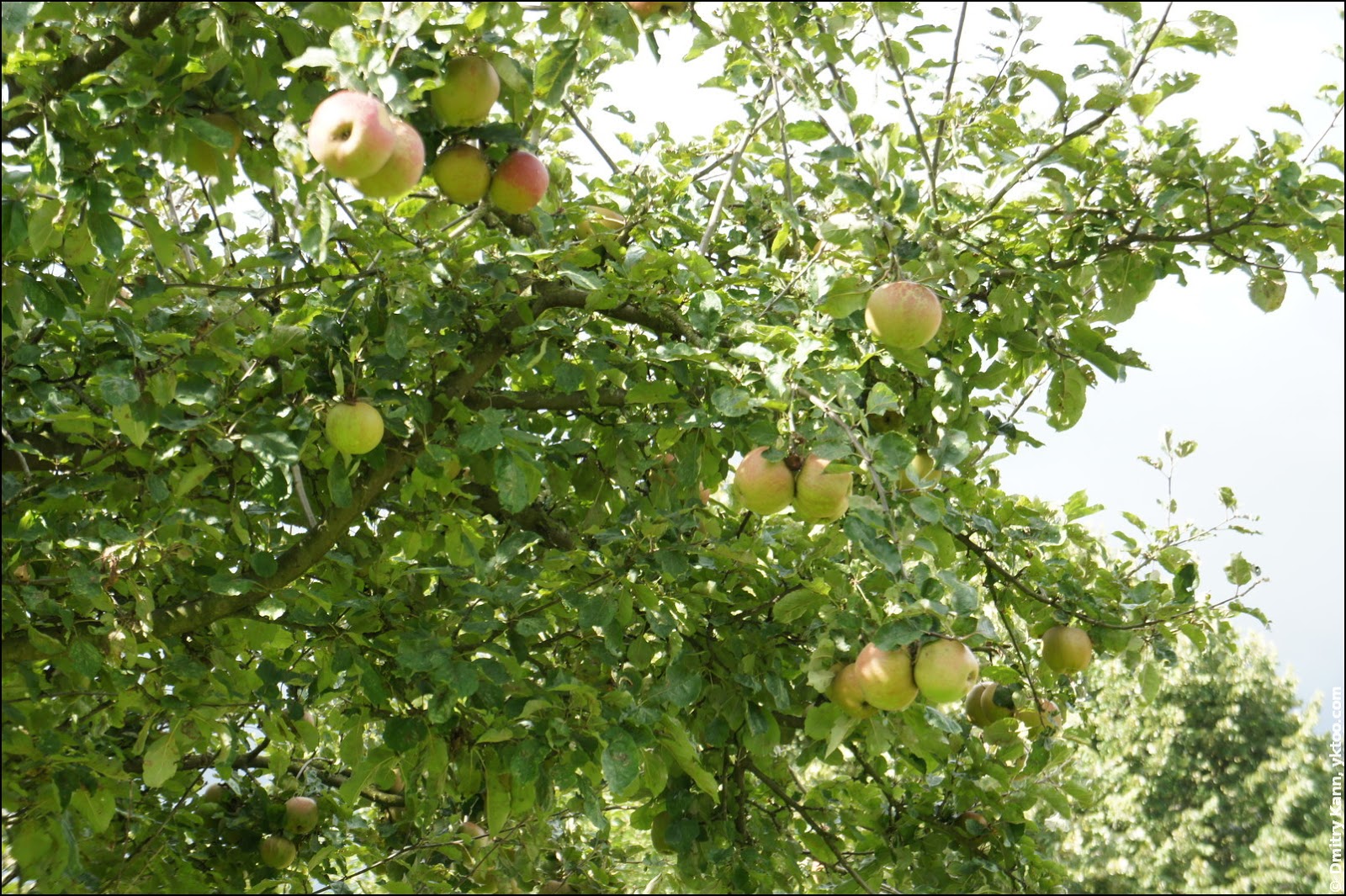
And so are pears:

Besides these, there’s a lot of apples, pears, grapes, plums, cherries and even kiwis in private gardens. Some owners offer them for sale:

It’s a self-service counter, the buyer should leave the money in the rusty box down below.
However, the gratis fruits are just as good, which we’ve experimentally proven:

The pie is made of apples picked in a nearby grove.
A humble town-hall building is also in the old part. It has a clock-tower with a bunch of bells:
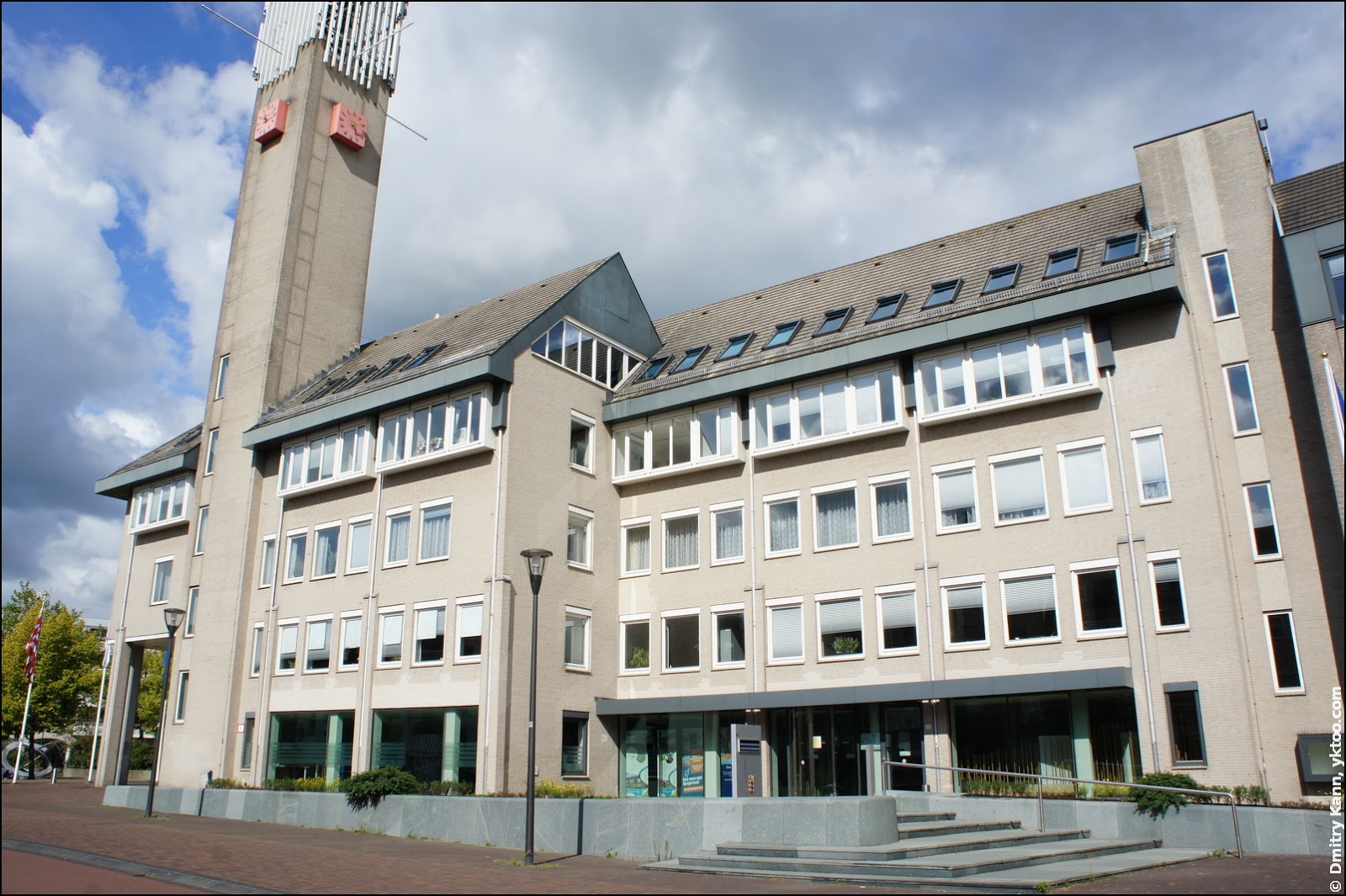
A fountain, which is… uhm… a symbol of a mandatory fountain before the town-hall building:

Modern technologies in the old town: the Dutch love to invest in sustainable, hence the solar panels. Not only is it subsidised by the government, but also reduces your electricity bill:

The oldest spot in the town, Oude Dorp (“Old Village”), is a tiny square that looks completely authentic:

Apart from restaurants and shops, there’s a traditional belfry next to it:

And a church:
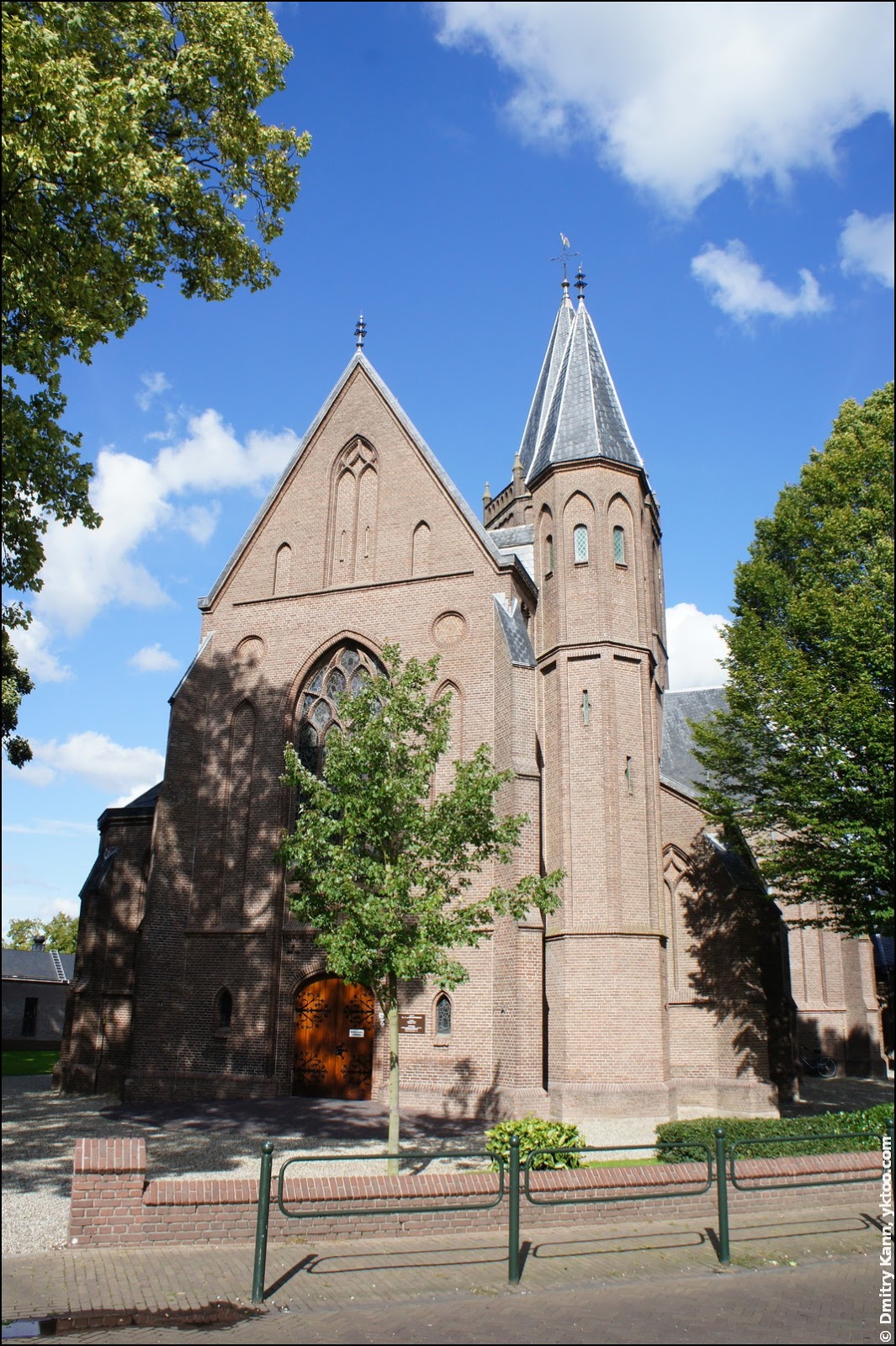
You can find the same setting in any Dutch settlement.
Young Houten
Architecture of the new part is sometimes different, but you can always tell the new buildings by the exterior walls:
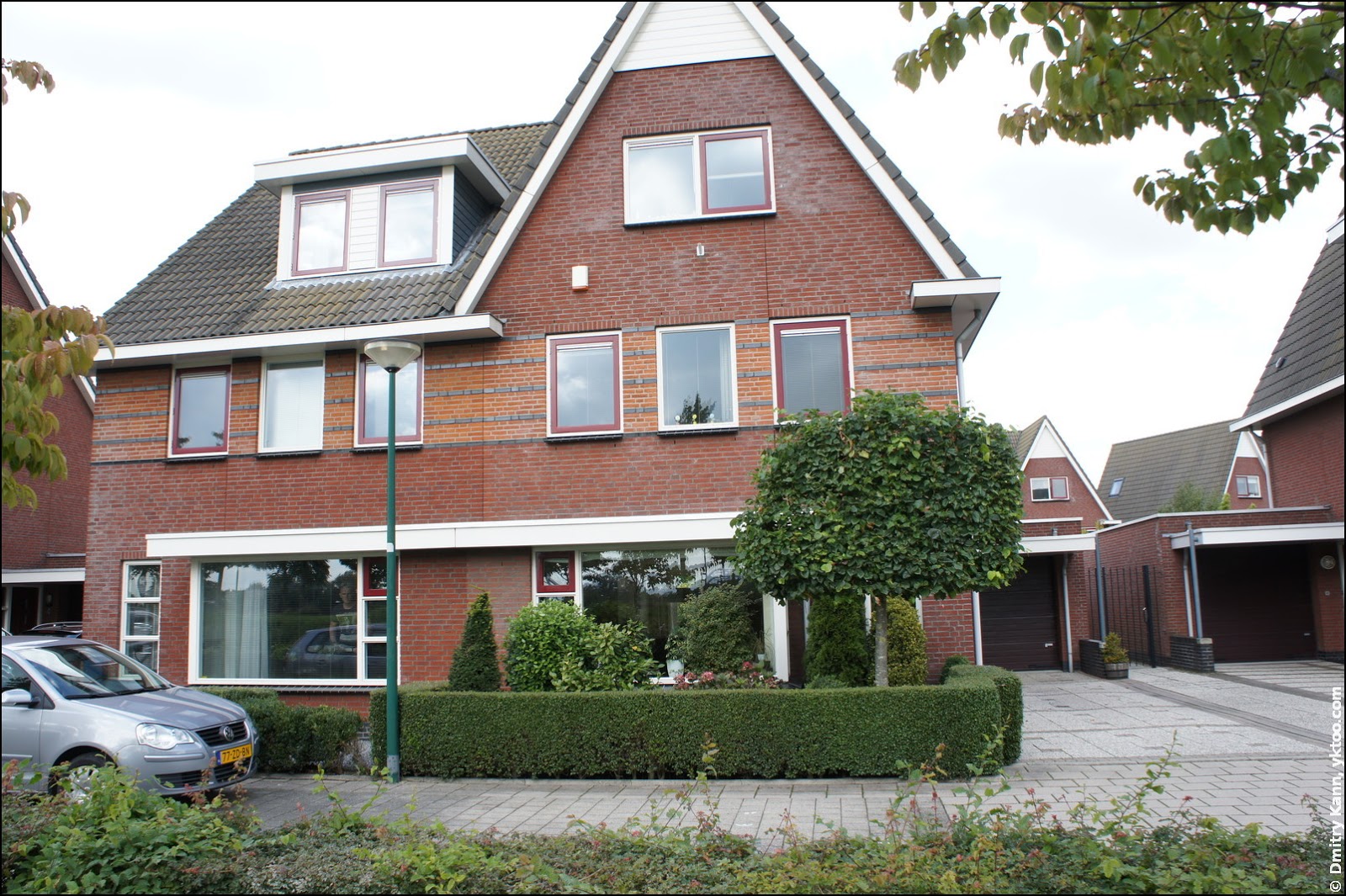
I’m particularly fond of those yellowish bricks, which resemble houses in southern Belgium:

One of the eye-catchers of the new part is the three-wing pyramid called Het Domein (“The Domain”), the “hill-house” (heuvelgebouw) built in 2002 based on the design of Das brothers:
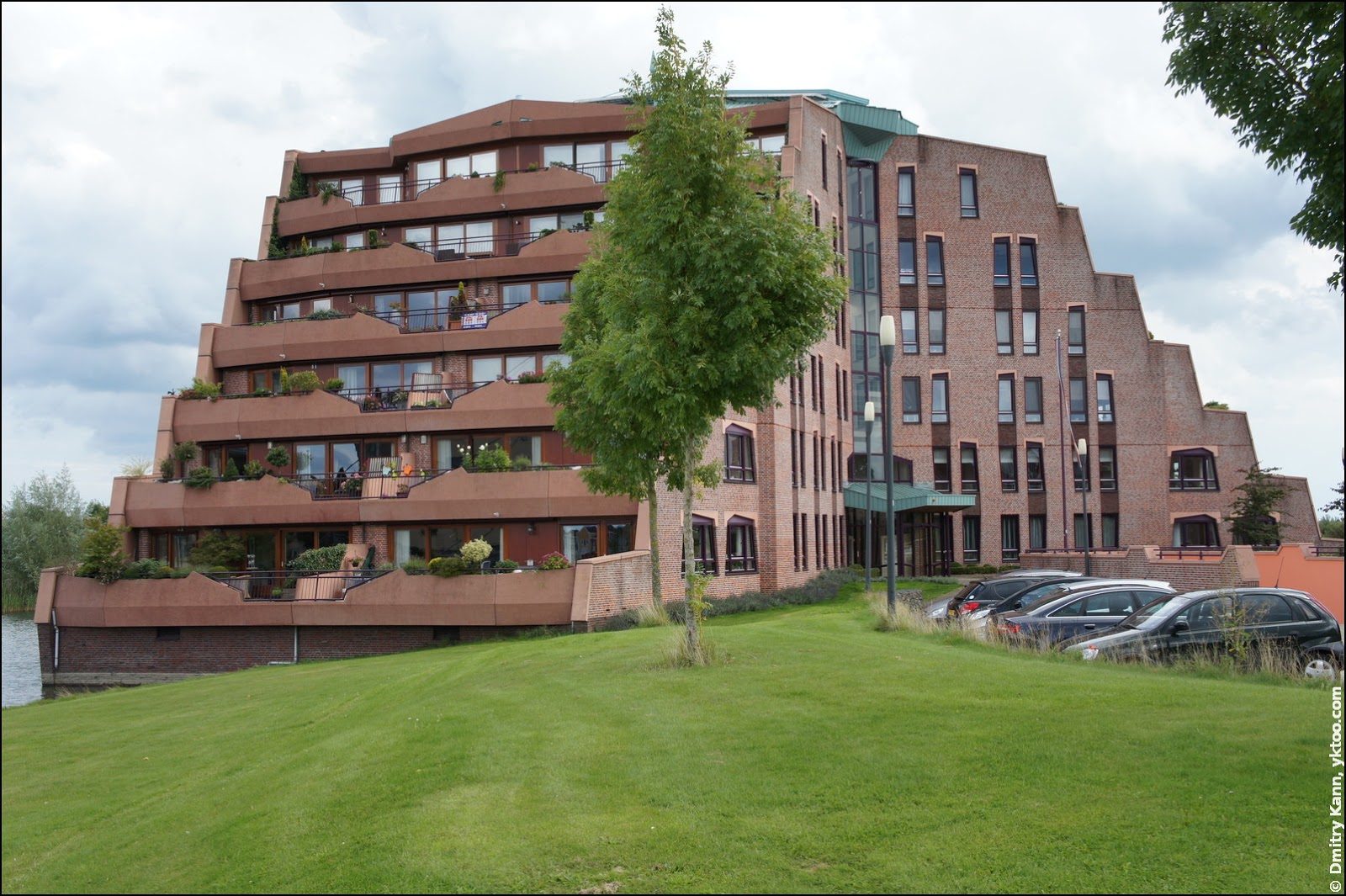
Each apartment has a terrace, all of them together forming the pyramid:

Most of the apartments located right above the water:

The nearby city beach on the Rietplas pool is not overly crowded in August. The little island on the left is only accessible via a shallow wade (which is about two feet deep):

These kids are fortunate enough to possess a fluisterboot (electric boat):

The pool is surrounded by houses, which must be pretty damp inside I think:
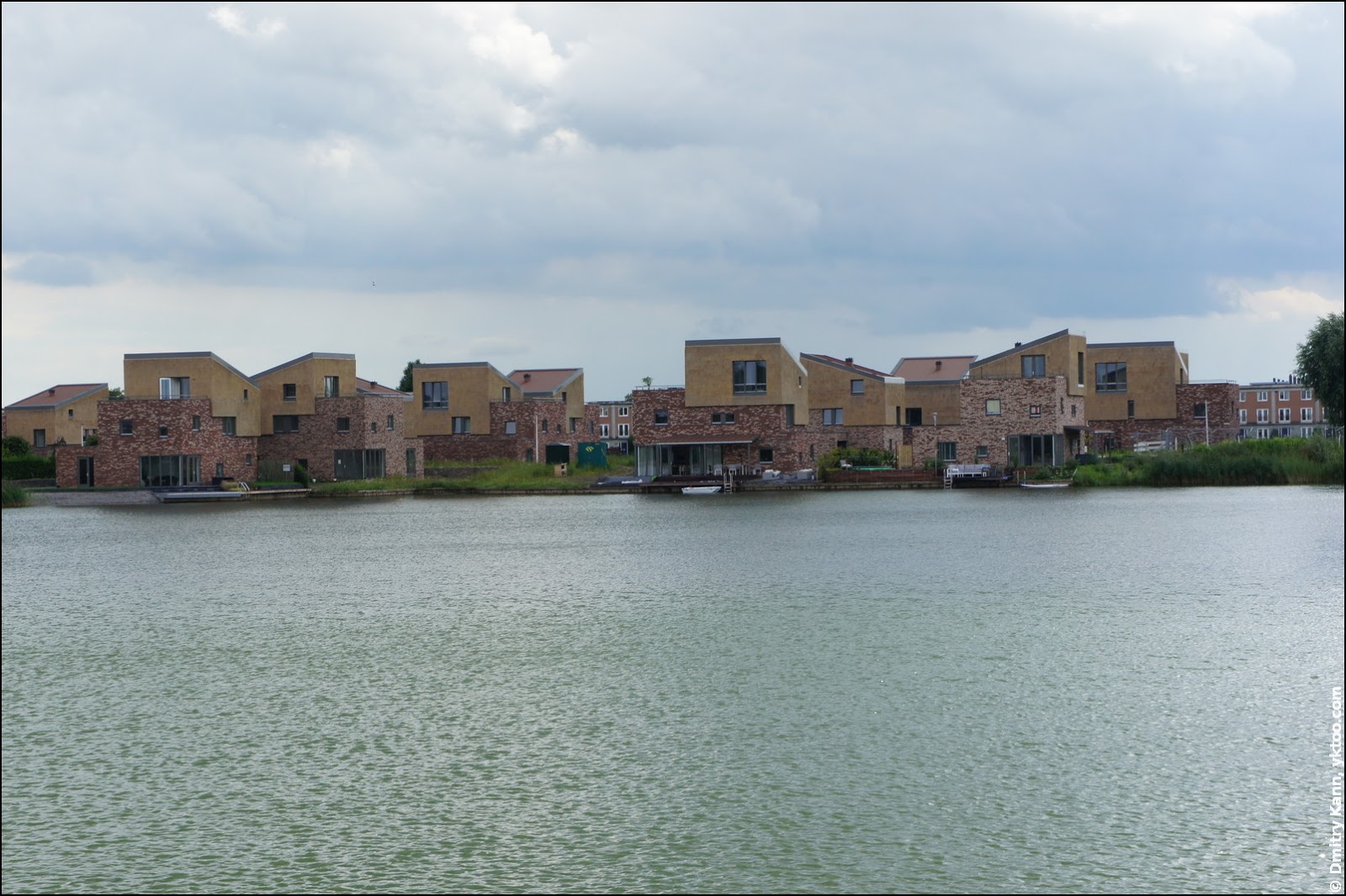
This block of toy-like houses is built right above the water surface:

In the medieval times the border of the Roman Empire lay here. This is reflected, for example, in the name of the Houten Castellum train station. All the streets in this neighbourhood have Italian names:
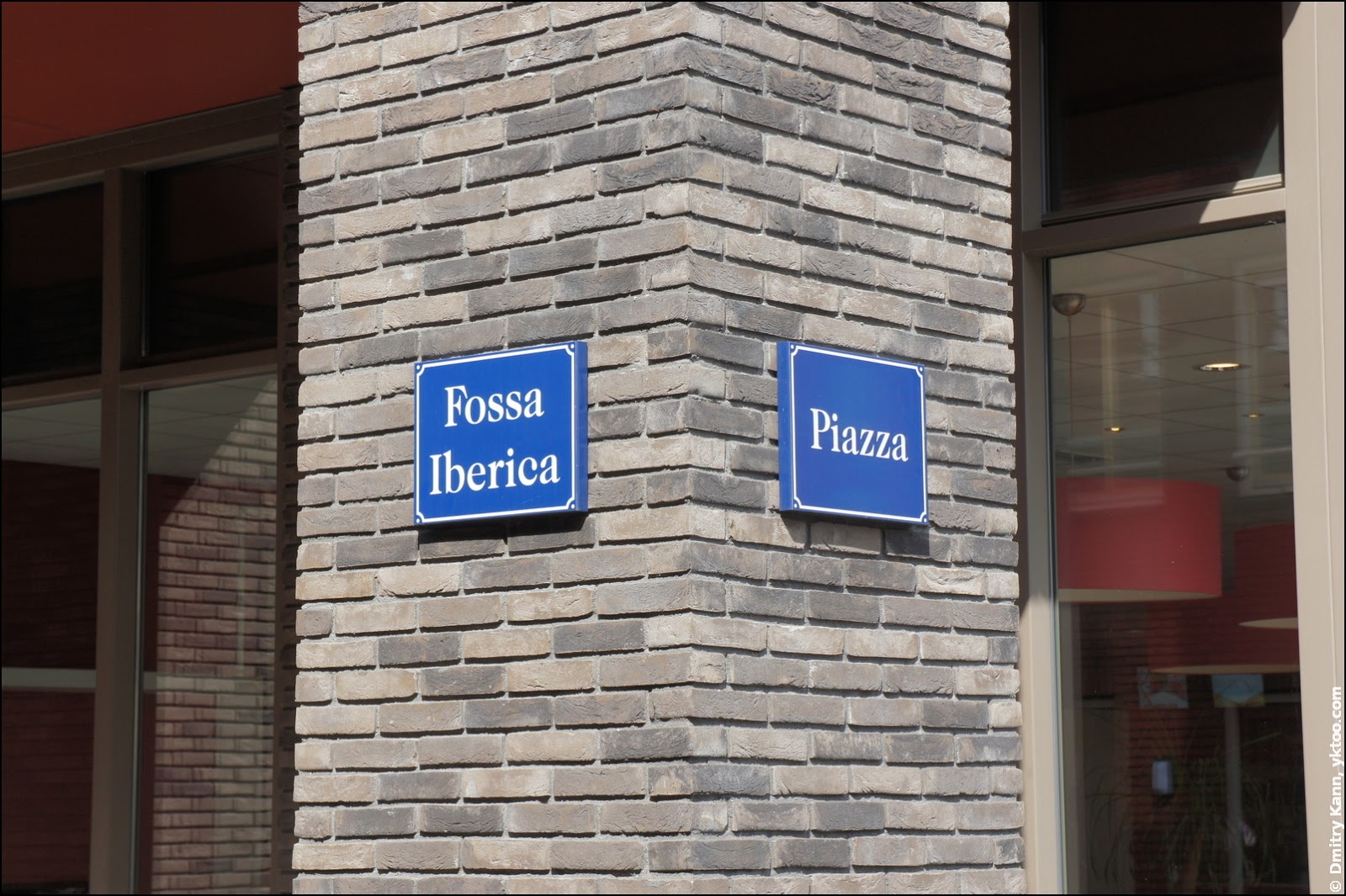
Piazza means “square” in Italian.
These new houses are splendid in my opinion:

And, of course, a good deal of them are erected on water:


That’s about all I have to say about my current residence. In my next posts I’ll tell you more about house-hunt. ■
 — world’s fastest URL shortener
— world’s fastest URL shortener
Comments